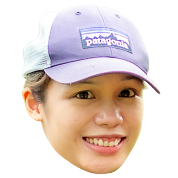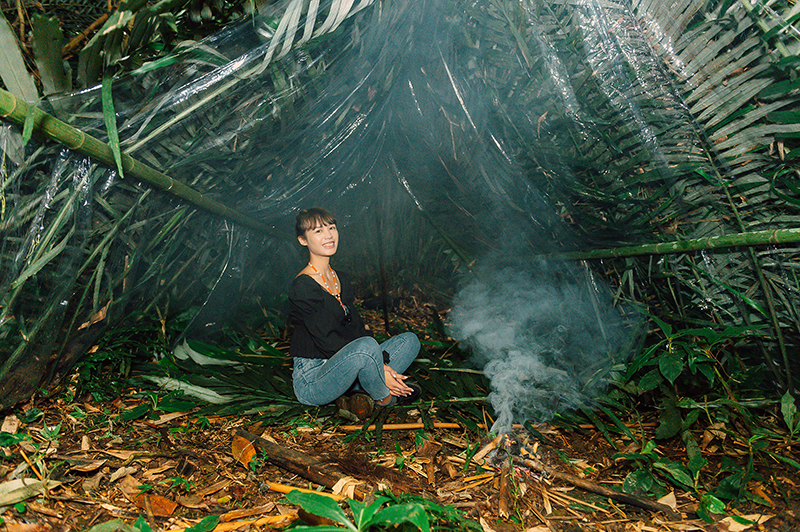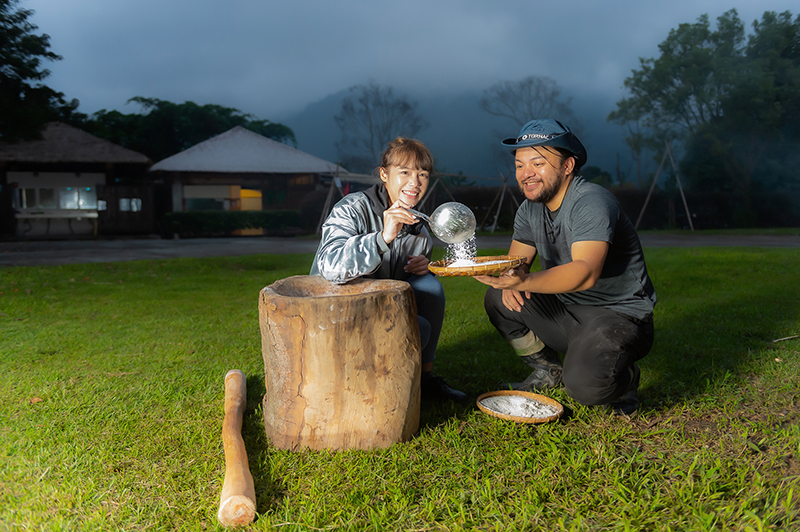How did the experience of moving between the indigenous community and the city shape your identity?

In terms of indigenous communities, I have lived in Bunun and Seediq indigenous communities, but the longest I have spent in was the Mahavun Community co-habited by the Tsou and Bunun peoples. Growing up in different indigenous communities taught me from a young age that I’m indigenous, and that there are other indigenous and non-indigenous peoples. But it was only after I moved to the city when I realized that indigenous peoples were the minority. It took me some time to adapt to life in the city, and when I moved back to the mountain, I had to learn again what life is like in the indigenous community. During my ten years living in the city, I identified myself as from Taichung. I knew that I am indigenous, but I would say that I am from Taichung. When I moved back to the indigenous community, I had to tell people instead that “I am from Mahavun”. Explaining to people again and again where Mahavun is, I slowly identified as from Mahavun as well. Now I have moved to Luluna, the indigenous community my dad was originally from. It is now a Bunun indigenous community, but formerly resided by the Tsou people, so I have always had a close relationship with the Tsou.
Growing up, I got to know myself by moving again and again. I realized that my experiences have been interwoven and layered with questions such as “are you from the mountain?” “Are you not from the mountain?” They have been a large part of my life. I do have experience in traditional rituals, indigenous languages, and forestry knowledge, but I do not highlight such experiences to my non-indigenous friends. I usually take them to places I have lived before, for example, to experience my daily life at Mahavun. They would be very surprised that we drink coffee instead of millet wine in the morning. Once, I brought a friend to Luluna Community during New Year. When nighttime came, we just went to bed. My friend had expected some kind of party, but things were just quiet in the community like always. Sometimes, a few friends would gather in the plaza nearby and chat, and end things by 9 at night. But if someone brings out a guitar, this gathering might extend for a while. The non-indigenous have a very “rustic indigenous” imagination of us, for example, they would ask, “do you have A/C at home?” But we live 1,000 meters above sea level, why would we need A/C? The first time I head the question, I found it hilarious.
Since I constantly move from place to place, I consciously remind myself not to stereotype any group, I consider it very offensive. Also, my father has always taught me, “you identify with wherever you live.” So, when I lived in the Seediq indigenous community, I joined the Seediq traditional song choir. The first traditional song suite I learned was in the Seediq language.

How did it feel setting the trap and building the hunter’s hut today?

I had no prior experience because, for one, I have no use for such experience, no one would expect Umav to hunt. Also, I have no such interest. Setting the trap and building the hunter’s hut today somehow connected me to my experiences learning to weave and spinning the ramie thread. I understood how essential these skills were in traditional society, especially in one with a gendered division of labor. For example, when we were making wine today, I asked, “does this give me extra credit?” The answer was, “no, everyone should be able to make wine.” But in contemporary society, not knowing such skills have no impact on my life. I can learn them, but I do not need to master them.
While setting the trap, I knew well that I needed to steer clear as much as possible and try not to cause people more trouble. When it comes to “asking questions”, having spent time in indigenous communities, I knew that elders believe “children should observe more and ask less”, so I tend to wait for a break before asking questions. They are setting a trap, after all, I was worried that I might get in the way.
When you were making wine, you mentioned that it looked a lot like the rice-pounding musical instrument of the Bunun people, what kind of music were you talking about?

There are some cultural groups in Luluna Community, where my father is from, that are trying to revive the “pestle music” culture, performing music by creating music scales with the pestle. They have performed on the stage of the National Theater before, and Bulareyaung has worked with them as well. To the Bunun, who value greatly “collectivity”, our music is performed in the form of harmony. The pestle music cannot be made by one person only, it has to come from a group of people, together, it is a complete piece.
The last time I pounded a pestle was in an Atayal indigenous community, I was making mochi. The elders mentioned that there are songs they sing specifically for making mochi, that is why I asked Voyu if there are songs they sing when pounding the pestle. That is the difference between our cultures. A pestle is just a pestle, but the Bunun and Atayal peoples play music with the pestle while the Tsou does not.
Does the winemaking process remind you of any other cultures relevant to other indigenous groups?
 We make wine with the whole rice grain, but here, they crush the rice into flour first, so that is new to me. We used to chew rice to make wine in the old days, but we no longer practice such traditions in recent years. We know that winemaking is essential to rituals, we only make wine for specific events, not just because we want a drink, which was a completely different drinking culture to the one developed after the Tobacco and Liquor Corporation came into the indigenous community. But it is not an indigenous “drinking culture”, but rather a “winemaking culture”. The entire winemaking process is aligned with the rituals and ceremonies, events in the village, and family ethics. It is all about the cultural structure of winemaking, and “drinking” is just the final step.
We make wine with the whole rice grain, but here, they crush the rice into flour first, so that is new to me. We used to chew rice to make wine in the old days, but we no longer practice such traditions in recent years. We know that winemaking is essential to rituals, we only make wine for specific events, not just because we want a drink, which was a completely different drinking culture to the one developed after the Tobacco and Liquor Corporation came into the indigenous community. But it is not an indigenous “drinking culture”, but rather a “winemaking culture”. The entire winemaking process is aligned with the rituals and ceremonies, events in the village, and family ethics. It is all about the cultural structure of winemaking, and “drinking” is just the final step.

You have hunting gear and tanning lessons coming up tomorrow, have you had prior experiences?
 No, I rarely took part in such activities unless friends specifically invites me or the opportunity arises, I am already busy enough learning the indigenous language and getting to know people in different places. Although I have no experience in tanning, nor can I make hunting gear, we have hunters in the family, so I am used to these things. I am just not expected to know how to do these things. I tend not to be surprised or overwhelmed emotionally by some occasional experience in the mountain because these things are part of my everyday life, people cannot tell so they just assume that I am from the city. Even my own people cannot tell that I am indigenous, nor can they tell whether I am Bunun or Atayal, I get this all the time. But once they talk to me, they know that these are things I am familiar with. This is why I tell stories and lectures over the internet and via Podcast, I believe that there are many out there who share similar experiences. I am not your typical indigenous youth, but that does not mean I am far removed from our culture.
No, I rarely took part in such activities unless friends specifically invites me or the opportunity arises, I am already busy enough learning the indigenous language and getting to know people in different places. Although I have no experience in tanning, nor can I make hunting gear, we have hunters in the family, so I am used to these things. I am just not expected to know how to do these things. I tend not to be surprised or overwhelmed emotionally by some occasional experience in the mountain because these things are part of my everyday life, people cannot tell so they just assume that I am from the city. Even my own people cannot tell that I am indigenous, nor can they tell whether I am Bunun or Atayal, I get this all the time. But once they talk to me, they know that these are things I am familiar with. This is why I tell stories and lectures over the internet and via Podcast, I believe that there are many out there who share similar experiences. I am not your typical indigenous youth, but that does not mean I am far removed from our culture.




